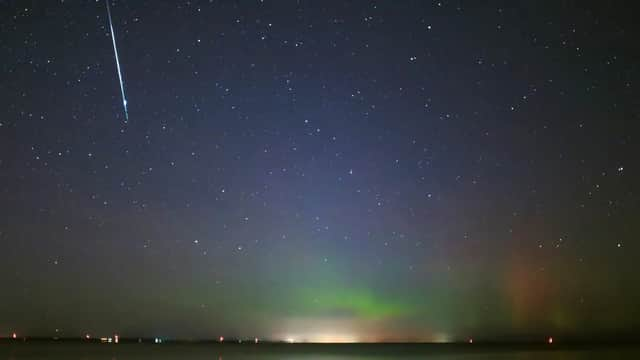Taurids meteor shower 2023: Where to see them in the UK, when is peak - how to see shooting stars


As the nights begin to draw in, and the daylight hours dwindle, there is more opportunity to enjoy the night sky. Stargazers around the world, amateur or otherwise, can take even a few minutes in the evening to marvel at the magnificent displays the universe has to offer.
In November alone, Jupiter and Uranus move into opposition, there is a daylight lunar occultation of Venus, and to top it all off there are a few meteor showers to keep an eye out for. One of the slower but main meteor showers to watch are the Taurids.
Advertisement
Hide AdAdvertisement
Hide AdWhat are the Taurid meteor showers?
The Taurids are split into two - North and South- and are associated with the comet Encke. However, the Southern Taurids originated from Comet Encke, while the Northern Taurids originated from the asteroid 2004 TG - possibly a large fragment of Encke due to its similar orbital parameters.
The showers are named after their radiant point in Taurus, but they are also known as Halloween fireballs due to the time they appear in the sky. These are slower meteors, appearing at a rate of about 5 per hour, moving slowly across the sky at about 28 kilometers per second (17 mi/s), or 100,800 km/h (65,000 mph) but if they are larger than a pebble, then they become bolides (an exceptionally bright meteor) and leave smoke trails.
When will the Taurids appear in the UK for 2023?
The South Taurids' is predicted to peak on 6 November just after midnight, 12.47am, and the North is predicted to peak on 13 November 2023, at 12.21am. Both showers do not have definite peaks but continuously run through October and November. The South Taurids run from about 23 September to 12 November. North Taurids are active from about 13 October to 2 December.
Under dark skies with no moon, both the South and North Taurid meteor showers produce about five meteors per hour (10 in total when they overlap), but make sure to keep an eye out for fireballs. This year, viewing conditions for the 2023 Taurid meteor showers are good as the moon will only be 2% illuminated.
Advertisement
Hide AdAdvertisement
Hide AdDr Minjae Kim, Research Fellow, Department of Physics, University of Warwick, said: "The Taurids meteor shower is unique in that it comprises two distinct streams (i.e., Southern and Northern Taurids), both of which have spread over time due to the gravitational influence of Jupiter. No matter where you are on Earth, with Antarctica being the sole exception, the Taurids meteor shower graces the skies of almost every corner of our planet.
And the good news is, you should be able to see them with the naked eye. Dr Kim added: "You don't even need any equipment such as telescopes or binoculars."
Comment Guidelines
National World encourages reader discussion on our stories. User feedback, insights and back-and-forth exchanges add a rich layer of context to reporting. Please review our Community Guidelines before commenting.
